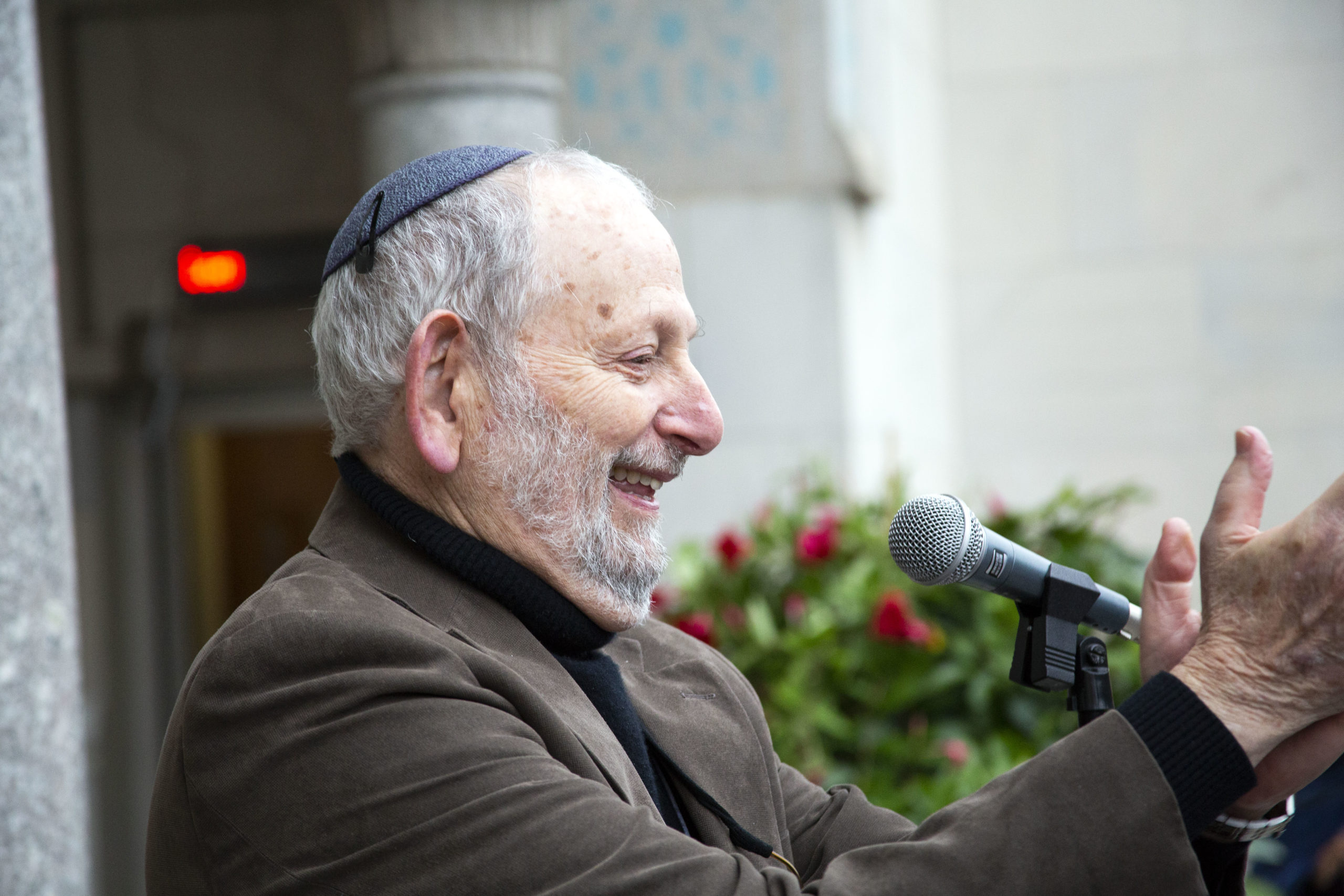
By Rabbi Gerry Serotta, Former Executive Director, IFC
The same week as the guilty verdict was handed down in the Chauvin trial, I had the opportunity to join faith leaders from several traditions at Masjid Muhammad, The Nation’s Mosque in Washington, DC, presenting on the theme of “The Oneness of G-D, White Supremacy, Racism & Religion
While some might argue that this theme is combining apples and oranges, from my perspective as a Rabbi I believe that these subjects are intimately linked. I posed three questions that are inspired by values revealed in the most basic texts of the faith traditions tracing back to Abraham/Ibrahim, Sarah, and Haggar.
- What color was ADAM, the first human (and does it matter?)
- What are the implications of the view that human beings are created “in the image and likeness of God?”
- How are monotheists, believers in God’s unity, supposed to regard the multiplicity of races and faith traditions?
In the Hebrew scriptures there appear to be two creation stories in the first and second chapters of Genesis. One describes a single human is created containing both male and female characteristics, who then are separated into two beings, male and female. The second version describes these two original humans as being formed out of the dust of the earth. If we combine the two versions, we see a non-binary, multi-racial ADAM, made out of the dust of the earth. The Hebrew word Adam, meaning human, is related to the Hebrew word adamah, meaning earth — in other words, the human is taken from and made up of humus.
If the human being is metaphorically taken from dust and returns to the earth as dust, what color were we in our origins. On the evidence of the variety of soil and the variety of races we must be of some kind of darkish mix. If we take the Hebrew word Adam, we see that it also is related to the word for a color – adom, i.e., “red.”
How relevant is it that the text of the Hebrew Bible seems to indicate that ADAM skin color was “reddish brown?” There is no evidence from the Bible about racial differences ever being significant. Two wise Imams have taught me insights into this question. We may think of the origins of humanity as parallel to the birth of any baby. As Imam Talib Shareef teaches that a new infant is not aware of race, this reflects the spiritual design of the Creator. Imam Yahya Hendi, a Palestinian-American, who is the Muslim chaplain at Georgetown, is frequently asked about where he is from. His answer: “I am a ‘Dustian’ – I come from Dust.” And so do we all.
When and where did we ever imagine that one race is superior to any other. The literal text says we are all created in God’s likeness. I hope All faith traditions understand this strictly as a metaphor, that we are created in the moral image of God. In Talmudic teaching this in interpreted to mean that as God is compassionate so should you be compassionate, as God is merciful so should you merciful, etc.
When human beings began to violate the command not to create images of Divinity, we began to create God in our image and likeness, the inverse of the command from scripture. All of these human-like images are in a way blasphemous, since they establish limits on the ineffable God, especially when they are used to privilege the race of those who create them. How wise it was to prohibit these images.
Finally, we see once again in the creation story of a singular Adam a reflection of a God’s unity. But as humanity evolved in history, imperfect and fallible human beings have developed what we now refer to as religions. These religions have developed all over the world in response to revelations in one generation but then interpreted over millennia by human followers.
How powerful and paradoxical that God created unity but apparently wanted diversity! The Q’uran provides the clearest solution to this paradox by emphasizing that if God had wanted to create only one religious path this could have happened, but the Creator wanted there to be many paths so that we could come to know one another and thereby challenge each other in the doing of the good and in the pursuit of justice.
A similar idea develops by attempting to discern the essence of Jewish and Christian teaching. In the New Testament Gospel of Matthew, Jesus is asked, “Teacher, which is the greatest commandment in the Law?” Jesus replied: “‘Love the Lord your God with all your heart and with all your soul and with all your mind.’[a] 38 This is the first and greatest commandment. 39 And the second is like it: ‘Love your neighbor as yourself.’[b] 40 All the Law and the Prophets hang on these two commandments.”
However we might note that in the same chapter of the Book of Leviticus where love of neighbor is prescribed we have a third love commandment: you shall love the stranger, the immigrant, (not just your neighbor who is like you,) but those who are different from you, just as you were strangers and immigrants in the land of Egypt.
Similarly, we find a dispute in the Talmud between Rabbi Akiva and Rabbi Ben Azzai as to which verse in scripture is the highest principle from which all may be derived. The former quotes the verse from Leviticus 19:18, “you shall act lovingly to your neighbor who is like yourself. However, Ben Azzai, counters with verse 5:1 from Genesis, “this is record of the descendants of Adam, created in the image of God.”
Ben Azzai’s choice encapsulates all of the messages that emphasize the centrality of love without distinction as to race, faith or other distinction. The singular God created the singular Adam so that no one could say my ancestors are better than you and so that all would see in their fellow human beings the reality of God and the potential to reflect in our behavior the attributes of mercy, compassion, and justice that are at the basis of all creation.
